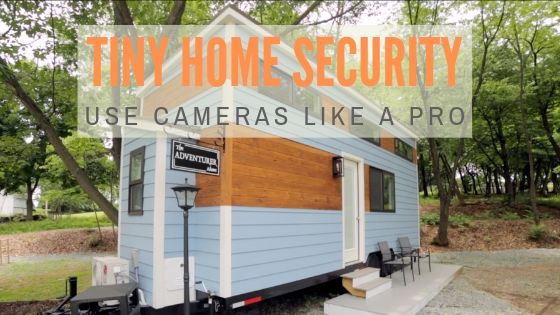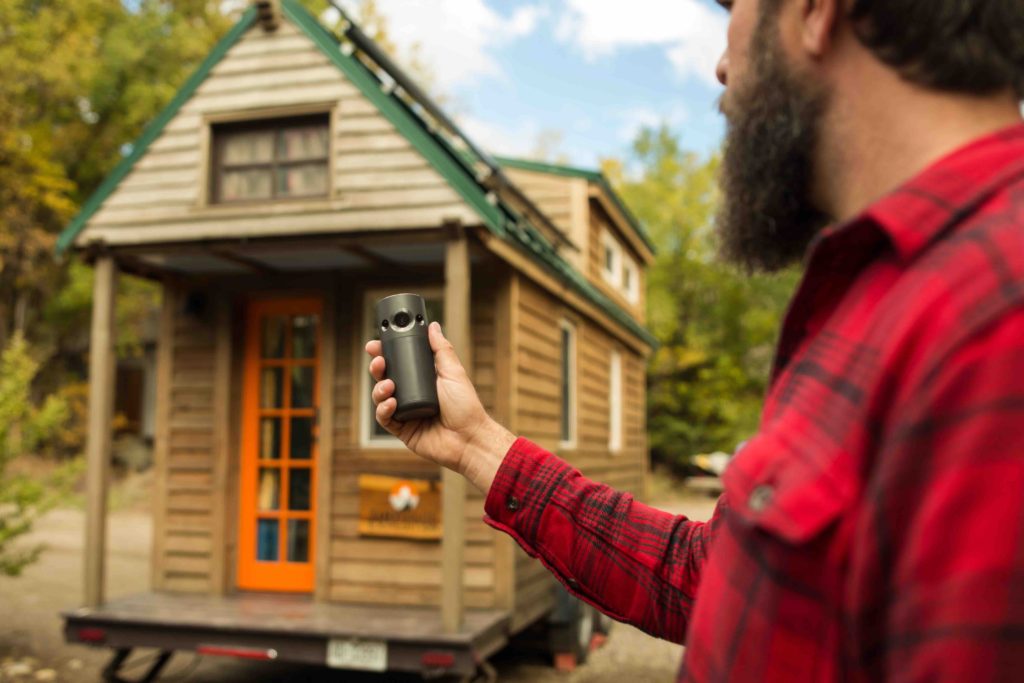
Tiny House Security: How to Make Security Cameras Invincible
Guest post on expert security cameras use and placement to best protect your tiny home.
The tiny house movement is becoming a new worldwide trend nowadays. No mortgage, lower energy consumption, budget-friendly, eco-friendly, convenient maintenance, and minimalist lifestyle are just some of the many advantages of living in a small house.
Also, the idea that you can build a house in a small space and place it on wheels so you can relocate wherever you want or even adopt a nomadic lifestyle is making tiny houses more appealing to people, including burglars. While not common, unfortunately far too many THOWs have been targeted by thieves attempting to roll away with your property.
It’s recommended to install home security systems to help you feel safe when you’re home or away. Though because your house is so small, security cameras might be easily spotted and easy to debug.
How to make security cameras invincible in a tiny house? Which places should the cameras be installed to be less visible?

Mount Behind Tinted Glass Window
Placing outdoor home security cameras inside the house, specifically behind tinted glass windows, wouldn’t make them 100% invincible. It wouldn’t be easy for burglars to disable the cameras as it is placed indoors, though. The moment burglars finally get a hold of the camera, the footage would’ve sent to your devices already.
Further, you would have to compromise your cameras’ night vision function and motion detection (for those with PIR motion sensor) if you place them behind a window. You can solve this by using cameras with software-based motion detection. These devices give more accurate alerts and can be installed with external infrared illuminators.
Place on Trees or Plant Pots
Most of the time, intruders focus more on how they should break in through your house door or window, and only scan the panes or walls for possible cameras. Considering this idea, you should place your cameras in places where they can still monitor specific areas while being covered.
You can mount your cameras on a tree outside your THOW. Or place one inside your home, in a potted plant with many leaves. These spots are mostly unnoticed. Not only by crooks but also with other people going in and out of your house.
Hide inside Household Items
A birdhouse’s enclosed design with a small hole in the front is a perfect spot to place your hidden cameras. It would be best if you use wireless cameras, but wired is okay too. You need to exert more effort in hiding the cables and make sure that there is no other stuff blocking the camera’s view.
Apart from birdhouses, you can also conceal cameras by placing them inside the following household items:
- Tissue boxes
- Plush toys
- Smoke detectors
- Bookshelves
- Aquarium tanks
- Curtain rods
- Mantles
- Picture Frames
- Lamps
- Wall clocks
- Hollow Books and many more.
Use Camouflage Skins
There are many different skins with camouflage patterns (for leafy and woody environments) that are available in any local stores today. For every homeowner, this is pretty much one of the basic yet effective options in concealing cameras.
You simply need to dress the cameras appropriately with the use of the skin of your choice, making sure they would blend suitably to its surroundings. Besides, for cameras installed in your ceiling or porch, there are plain-colored skins that you may use that can only be noticed by discerning and meticulous eyes.
Wireless Surveillance Network via Old Smartphones
If you still have an old, worn-out smartphone sitting with the dust in your bedroom dresser drawer, why not make use of it and turn it into something useful, like a wireless webcam device? In this way, you’ll have a free home surveillance network.
The first step, and probably the most difficult one, is to look for a mobile app that can turn your phone into an IP camera. You need to make sure that you’re going to use smartphones that have Wi-Fi capability, and Android or iOS systems.
No matter what smartphone or app you’re using, there will be a port and an IP address. These are used to manage your new wireless webcam on the screen once it starts streaming. Otherwise, you can usually look for the broadcast IP address in the settings.
The next step will be the placement. Keep in mind that you’re going to utilize smartphones, so the best locations to set them up would be a spot near a wall outlet. Typically, the best spot is the window sill.
If there’s no place in your windows where you can wedge your phones while pointing toward the area you want to monitor, use mounting strips. You can also use suction-cup based car smartphone holders that can firmly affix your gadget against the window. Afterward, set up your computer-based monitoring station.
Watch this video for more tips and tools you can use to deter crooks and prevent tiny house theft.
Author's Bio:
Tyler Pack is a real estate consultant and journalist, with a passion for smart homes technology. He is keen on writing about home and property security, and cybersecurity.
